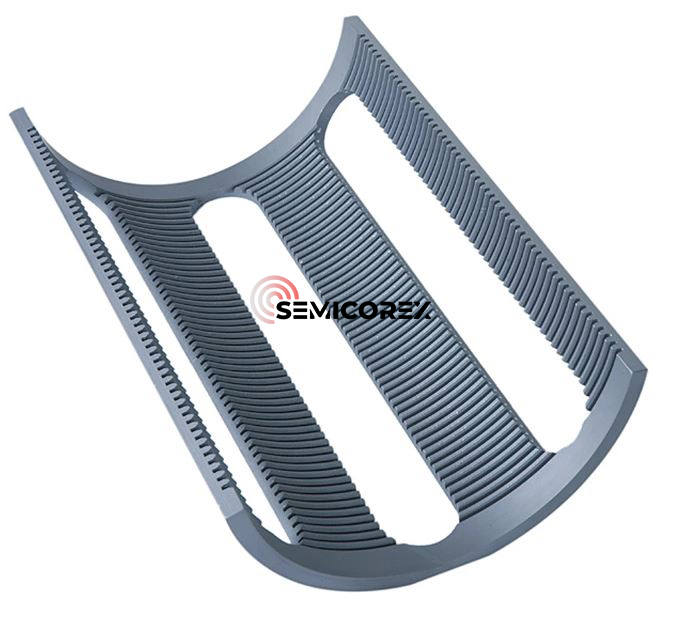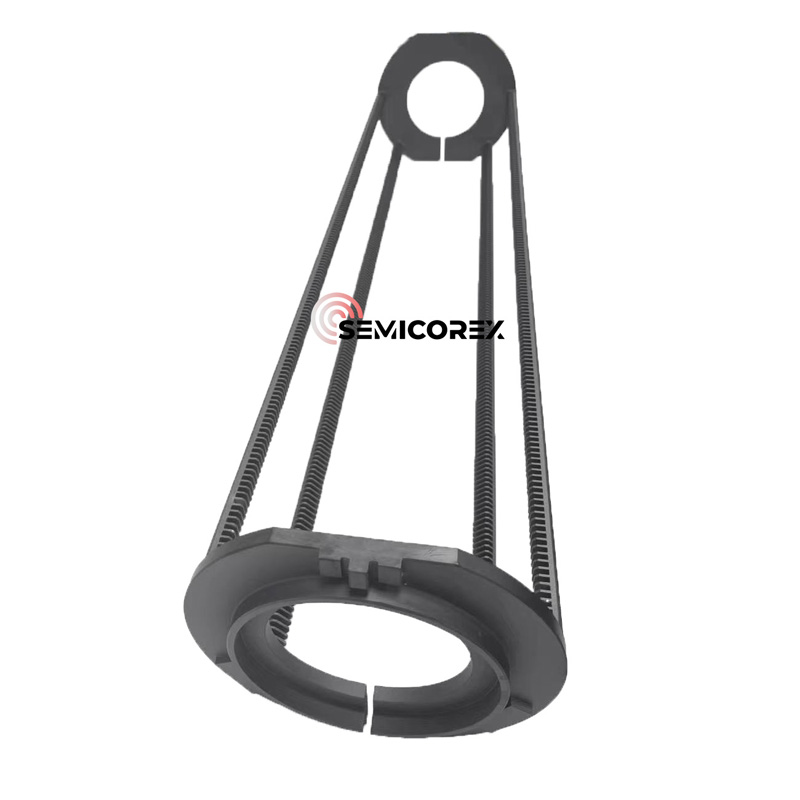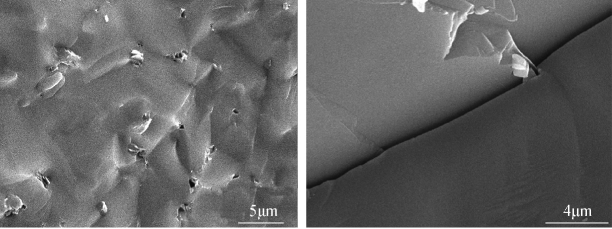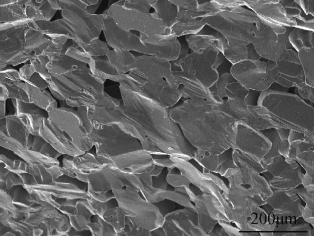
- English
- Español
- Português
- русский
- Français
- 日本語
- Deutsch
- tiếng Việt
- Italiano
- Nederlands
- ภาษาไทย
- Polski
- 한국어
- Svenska
- magyar
- Malay
- বাংলা ভাষার
- Dansk
- Suomi
- हिन्दी
- Pilipino
- Türkçe
- Gaeilge
- العربية
- Indonesia
- Norsk
- تمل
- český
- ελληνικά
- український
- Javanese
- فارسی
- தமிழ்
- తెలుగు
- नेपाली
- Burmese
- български
- ລາວ
- Latine
- Қазақша
- Euskal
- Azərbaycan
- Slovenský jazyk
- Македонски
- Lietuvos
- Eesti Keel
- Română
- Slovenski
- मराठी
- Srpski језик
Silicon Carbide Ceramics and Their Diverse Fabrication Processes
2024-08-07
Silicon carbide (SiC) ceramics are widely employed in demanding applications such as precision bearings, seals, gas turbine rotors, optical components, high-temperature nozzles, heat exchanger components, and nuclear reactor materials. This widespread use stems from their exceptional properties, including high wear resistance, excellent thermal conductivity, superior oxidation resistance, and outstanding high-temperature mechanical properties. However, the strong covalent bonding and low diffusion coefficient inherent to SiC present a significant challenge in achieving high densification during the sintering process. Consequently, the sintering process becomes a crucial step in obtaining high-performance SiC ceramics.
This paper provides a comprehensive overview of the various manufacturing techniques employed to produce dense RBSiC/PSSiC/RSiC ceramics, highlighting their unique characteristics and applications:
1. Reaction Bonded Silicon Carbide (RBSiC)
RBSiC involves mixing silicon carbide powder (typically 1-10 μm) with carbon, shaping the mixture into a green body, and subjecting it to high temperatures for silicon infiltration. During this process, silicon reacts with carbon to form SiC, which binds with the existing SiC particles, ultimately achieving densification. Two primary silicon infiltration methods are utilized:
Liquid Silicon Infiltration: Silicon is heated above its melting point (1450-1470°C), allowing the molten silicon to infiltrate the porous green body through capillary action. The molten silicon then reacts with carbon, forming SiC.
Vapor Silicon Infiltration: Silicon is heated beyond its melting point to generate silicon vapor. This vapor permeates the green body and subsequently reacts with carbon, forming SiC.
Process Flow: SiC powder + C powder + Binder → Shaping → Drying → Binder burnout in a controlled atmosphere → High-temperature Si infiltration → Post-processing
(1) Key Considerations:
The operating temperature of RBSiC is limited by the residual free silicon content in the material. Typically, the maximum operating temperature is around 1400°C. Above this temperature, the strength of the material deteriorates rapidly due to the melting of the free silicon.
Liquid silicon infiltration tends to leave a higher residual silicon content (typically 10-15%, sometimes exceeding 15%), which can negatively impact the final product’s properties. In contrast, vapor silicon infiltration allows for better control over the residual silicon content. By minimizing the porosity in the green body, the residual silicon content after sintering can be reduced to below 10%, and with careful process control, even below 8%. This reduction significantly improves the overall performance of the final product.
It is important to note that RBSiC, regardless of the infiltration method, will inevitably contain some residual silicon (ranging from 8% to over 15%). Therefore, RBSiC is not a single-phase silicon carbide ceramic but rather a “silicon + silicon carbide” composite. Consequently, RBSiC is also referred to as SiSiC (silicon silicon carbide composite).
(2) Advantages and Applications:
RBSiC offers several advantages, including:
Low Sintering Temperature: This reduces energy consumption and production costs.
Cost-Effectiveness: The process is relatively simple and uses readily available raw materials, contributing to its affordability.
High Densification: RBSiC achieves high density levels, leading to improved mechanical properties.
Near-Net Shaping: The carbon and silicon carbide preform can be pre-machined to intricate shapes, and the minimal shrinkage during sintering (typically less than 3%) ensures excellent dimensional accuracy. This reduces the need for expensive post-sintering machining, making RBSiC particularly suitable for large, complex-shaped components.
Due to these advantages, RBSiC enjoys widespread use in various industrial applications, primarily for manufacturing:
Furnace components: Linings, crucibles, and saggars.
Space mirrors: RBSiC’s low thermal expansion coefficient and high elastic modulus make it an ideal material for space-based mirrors.
High-temperature heat exchangers: Companies like Refel (UK) have pioneered the use of RBSiC in high-temperature heat exchangers, with applications ranging from chemical processing to power generation. Asahi Glass (Japan) has also adopted this technology, producing heat exchange tubes ranging from 0.5 to 1 meter in length.
Furthermore, the increasing demand for larger wafers and higher processing temperatures in the semiconductor industry has spurred the development of high-purity RBSiC components. These components, manufactured using high-purity SiC powder and silicon, are gradually replacing quartz glass parts in support jigs for electron tubes and semiconductor wafer processing equipment.


Semicorex RBSiC Wafer Boat for Diffusion Furnace
(3) Limitations:
Despite its advantages, RBSiC possesses certain limitations:
Residual Silicon: As previously mentioned, the RBSiC process inherently results in residual free silicon within the final product. This residual silicon negatively affects the material’s properties, including:
Reduced strength and wear resistance compared to other SiC ceramics.
Limited corrosion resistance: Free silicon is susceptible to attack by alkaline solutions and strong acids like hydrofluoric acid, restricting RBSiC’s use in such environments.
Lower high-temperature strength: The presence of free silicon limits the maximum operating temperature to around 1350-1400°C.
2. Pressureless Sintering - PSSiC
Pressureless sintering of silicon carbide achieves densification of samples with different shapes and sizes at temperatures between 2000-2150°C under an inert atmosphere and without applying external pressure, by adding suitable sintering aids. The pressureless sintering technology of SiC has matured, and its advantages lie in its low production cost and no restrictions on the shape and size of products. In particular, solid-phase sintered SiC ceramics have high density, uniform microstructure, and excellent comprehensive material properties, making them widely used in wear-resistant and corrosion-resistant sealing rings, sliding bearings, and other applications.
The pressureless sintering process of silicon carbide can be divided into solid-phase sintered silicon carbide (SSiC) and liquid-phase sintered silicon carbide (LSiC).

Microstructure and grain boundary of pressureless solid-phase sintered silicon carbide
Solid-phase sintering was first invented by American scientist Prochazka in 1974. He added a small amount of boron and carbon to submicron β-SiC, realizing pressureless sintering of silicon carbide and obtaining a dense sintered body with a density close to 95% of the theoretical value. Subsequently, W. Btcker and H. Hansner used α-SiC as raw material and added boron and carbon to achieve densification of silicon carbide. Many later studies have shown that both boron and boron compounds and Al and Al compounds can form solid solutions with silicon carbide to promote sintering. The addition of carbon is beneficial to sintering by reacting with silicon dioxide on the surface of silicon carbide to increase surface energy. Solid-phase sintered silicon carbide has relatively “clean” grain boundaries with basically no liquid phase present, and the grains grow easily at high temperatures. Therefore, the fracture is transgranular, and the strength and fracture toughness are generally not high. However, due to its “clean” grain boundaries, the high-temperature strength does not change with increasing temperature and generally remains stable up to 1600°C.
Liquid-phase sintering of silicon carbide was invented by American scientist M.A. Mulla in the early 1990s. Its main sintering additive is Y2O3-Al2O3. Liquid-phase sintering has the advantage of lower sintering temperature compared to solid-phase sintering, and the grain size is smaller.
The main disadvantages of solid-phase sintering are the high sintering temperature required (>2000°C), the high purity requirements for raw materials, the low fracture toughness of the sintered body, and the strong sensitivity of fracture strength to cracks. Structurally, the grains are coarse and uneven, and the fracture mode is typically transgranular. In recent years, research on silicon carbide ceramic materials at home and abroad has focused on liquid-phase sintering. Liquid-phase sintering is achieved by using a certain amount of multi-component low-eutectic oxides as sintering aids. For example, binary and ternary aids of Y2O3 can make SiC and its composites exhibit liquid-phase sintering, achieving ideal densification of the material at lower temperatures. At the same time, due to the introduction of the grain boundary liquid phase and the weakening of the unique interface bonding strength, the fracture mode of the ceramic material changes to an intergranular fracture mode, and the fracture toughness of the ceramic material is significantly improved.
3. Recrystallized Silicon Carbide - RSiC
Recrystallized silicon carbide (RSiC) is a high-purity SiC material made from high-purity silicon carbide (SiC) powder with two different particle sizes, coarse and fine. It is sintered at high temperatures (2200-2450°C) through an evaporation-condensation mechanism without adding sintering aids.
Note: Without sintering aids, the growth of the sintering neck is generally achieved through surface diffusion or evaporation-condensation mass transfer. According to the classical sintering theory, neither of these mass transfer methods can reduce the distance between the centers of mass of the contacting particles, thus not causing any shrinkage on a macroscopic scale, which is a non-densification process. To solve this problem and obtain high-density silicon carbide ceramics, people have taken many measures, such as applying heat, adding sintering aids, or using a combination of heat, pressure, and sintering aids.

SEM image of the fracture surface of recrystallized silicon carbide
Characteristics and Applications:
RSiC contains more than 99% SiC and basically no grain boundary impurities, retaining many excellent properties of SiC, such as high-temperature strength, corrosion resistance, and thermal shock resistance. Therefore, it is widely used in high-temperature kiln furniture, combustion nozzles, solar thermal converters, diesel vehicle exhaust gas purification devices, metal smelting, and other environments with extremely demanding performance requirements.
Due to the evaporation-condensation sintering mechanism, there is no shrinkage during the firing process, and no residual stress is generated to cause deformation or cracking of the product.
RSiC can be formed by various methods such as slip casting, gel casting, extrusion, and pressing. Since there is no shrinkage during the firing process, it is easy to obtain products with accurate shapes and sizes as long as the green body dimensions are well controlled.
The fired recrystallized SiC product contains approximately 10%-20% residual pores. The porosity of the material largely depends on the porosity of the green body itself and does not change significantly with the sintering temperature, providing a basis for porosity control.
Under this sintering mechanism, the material has many interconnected pores, which has a wide range of applications in the field of porous materials. For example, it can replace traditional porous products in the fields of exhaust gas filtration and fossil fuel air filtration.
RSiC has very clear and clean grain boundaries without glassy phases and impurities because any oxide or metal impurities have volatilized at high temperatures of 2150-2300°C. The evaporation-condensation sintering mechanism can also purify SiC (SiC content in RSiC is above 99%), retaining many excellent properties of SiC, making it suitable for applications requiring high-temperature strength, corrosion resistance, and thermal shock resistance, such as high-temperature kiln furniture, combustion nozzles, solar thermal converters, and metal smelting.**




